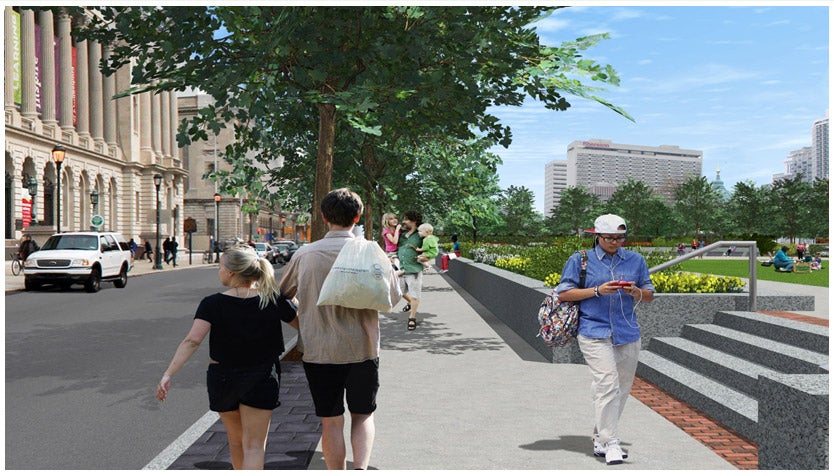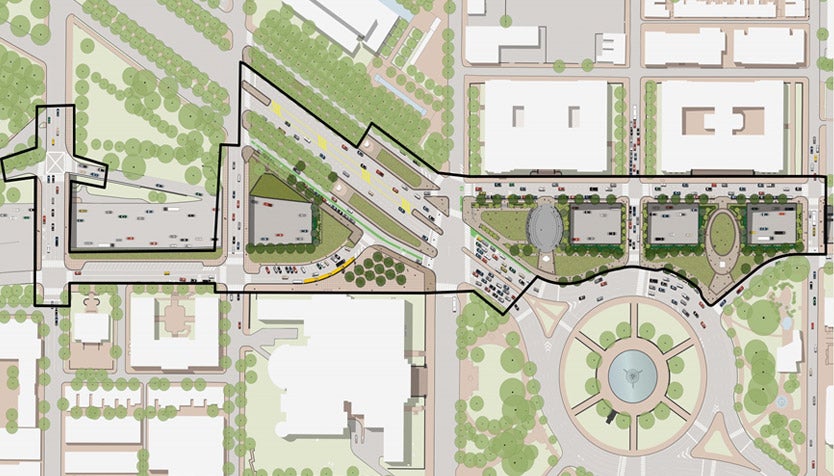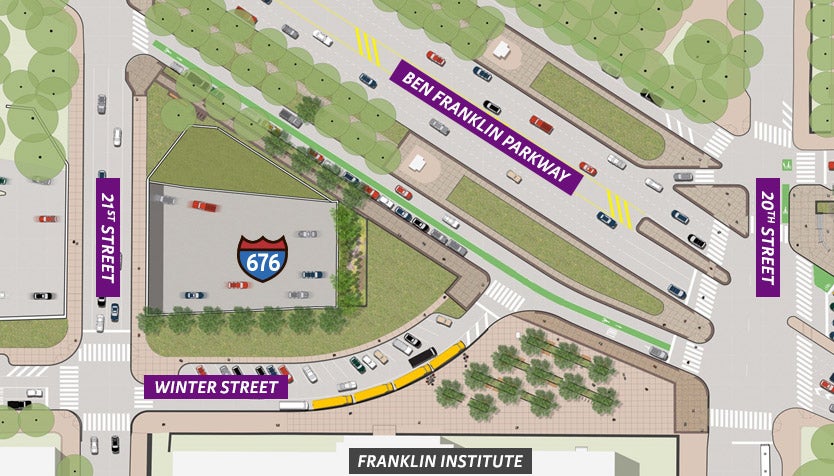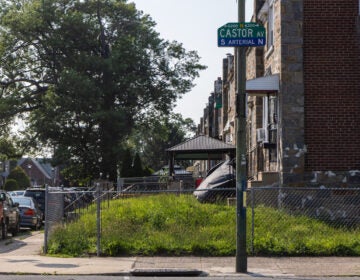Low bids on I-676 bridge rehab frees up funds for Chestnut St. bridge work

They say you need to spend money to make money.
That’s no mere cliché when it comes to public infrastructure spending – Philadelphia’s economic machinery would grind to a halt if our bridges, trains and roads crumbled and collapsed.
But it’s rare to have an adage work as literally as this one is now for PennDOT and the Delaware Valley Regional Planning Commission (DVRPC). New funding from Act 89 is allowing the agencies to speed up construction on some major rehabilitation projects, like the upcoming restoration of seven bridges over I-676 near Logan Square, netting huge savings in the process.
And those savings are now being shifted to speed up needed repairs to Chestnut Street’s bridges. The DVRPC’s Regional Technical Committee essentially authorized that shift at this month’s meeting by recommending an amendment to the Transportation Improvement Program to that effect. The move will be official once the full DVRPC Board approves that amendment to the TIP, which is basically a to-do list for federal transportation funding.
Construction begins next month on the I-676 project. As with other major transportation projects, PennDOT has created a website for the I-676 bridge repair, which includes some new renderings of the planned streetscape improvements in the surrounding area.
Before Act 89’s passage in 2013, PennDOT planned on replacing the seven bridges through back-to-back contracts. Act 89 freed up certain funds initially allocated to other projects, allowing PennDOT to combine the seven overpasses crossing the Vine Street Expressway into just one contract, which will ultimately speed the entire undertaking up by 12-18 months.
Combining contracts saves a ton of money, in a lot of different ways: economies of scale in purchasing materials, reduced search costs, and the realization of various efficiencies. Add in some cheaper supply prices due to lower oil prices and some surprisingly competitive bids, and the rehab’s projected construction cost went from about $98 million to $55 million – a $42 million difference. It’s worth noting that, even if PennDOT went with the highest bidder, the project would still be projected to save close to $29 million – the difference really comes from the increased efficiency.
WORKING HARD FOR THE MONEY – WHY THE ACCOUNTING IS COMPLEX
Why all the fund shifting, money moving and expense reallocations? Well, public transportation projects are funded from a wide variety of sources. Lots of transportation funds are extremely restricted in how they can be deployed. That can be particularly true for federal funding, which usually requires matching monies from the state and local government. Other funds are less particular about how they’re spent. Often, those flexible funds are needed on the most urgent projects, which may or may not be eligible for more restricted funds. Thus, piecing together projecting funding from a variety of sources can be a bit like Tetris for the regional planners. Act 89’s revenues plugged a number of holes, freeing up other funds.
Here, the knock-on effect isn’t limited to fixing up the bridges near Logan Square sooner and cheaper. The savings are now being shifted to rehab work on Chestnut Street’s bridges over the Schuylkill River and its eponymous expressway, as well as work on West Schuylkill Avenue.
The Chestnut Street bridge project was originally planned to cost a total of $89 million, beginning construction in 2018 and finishing up in 2021. Now, barring a rare and unexpected reversal by the DVRPC Board, fixing the bridges will cost just $78.5 million and construction will start in 2016 and finish by 2018. Those are savings of $10.5 million, two years in waiting for construction, and a year in total construction time.
The money from Act 89 isn’t merely getting added on top of the old transportation budget: it’s being leveraged. Every additional dollar from Act 89 is having more than a dollar’s impact on the state’s highways, bridges, railroads and trails, although no one can say just how much more at this time.
While everyone’s happy to see the state saving some green, some of them look at how the money is now being spent with the green eye of envy, wishing it would be used for another kind of green: capping the Vine Street Expressway with parkland.
“If PennDOT had released the results of their study regarding the cost of capping [I-676] at all four sections of Logan Square, we would be able to make a more informed decision on how to best spend this money,” wrote Kyle McShane in an e-mail. McShane created the website Cap 676 and an associated Facebook page, advocating for the more ambitious covering of that part of the Vine Street Expressway. Like him, many big-thinking urbanists were disappointed by the relatively incremental improvement to this part of the city.
“It is quite possible that the capping of an additional one to three sections could have been achieved with these saved dollars.”
Not so, says PennDOT’s Assistant Executive for Design, Chuck Davies. “If you took the money [saved] and tried to cover [I-676], you would need to redesign the project,” said Davies. Redesigning the project would essentially mean starting from square one, and that would mean construction wouldn’t start anytime soon.
WHYY is your source for fact-based, in-depth journalism and information. As a nonprofit organization, we rely on financial support from readers like you. Please give today.










